Hoshi Imo is a classic fall snack in Japan, allowing you to enjoy the natural sweetness of Japanese sweet potatoes. Its rich, concentrated flavor will leave you craving more with every bite.
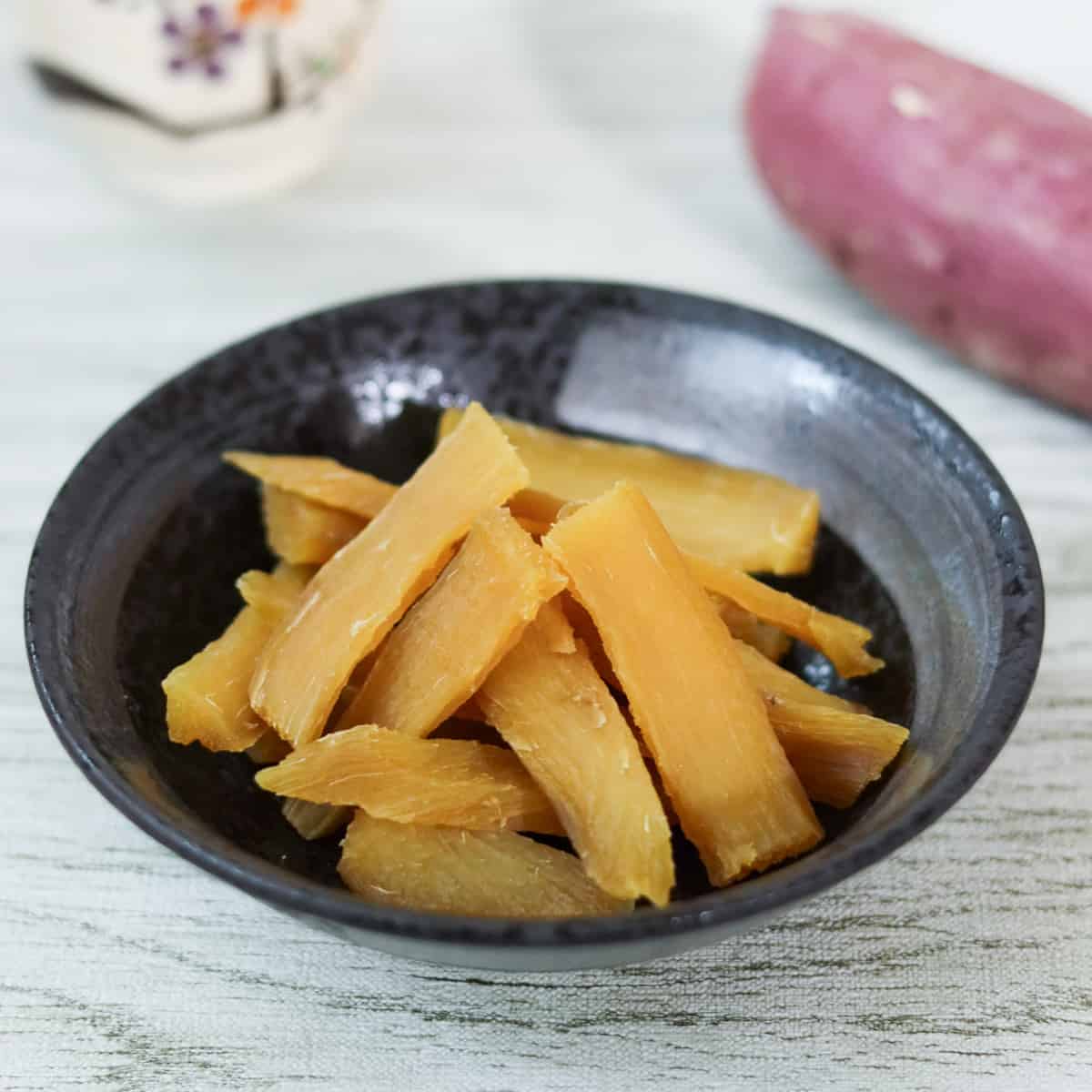
Jump to:
What is Hoshi Imo?
Hoshi Imo is a Japanese snack made from Japanese sweet potatoes that are steamed or boiled and then dried in the sun. "Hoshi" means dried, and "Imo" refers to potato—specifically Japanese sweet potatoes, also known as satsumaimo, which are used in this snack. The drying process gives the sweet potatoes a texture similar to dried fruit and enhances their natural sweetness.
It is a popular snack in Japan and is commonly found in grocery stores, especially during the fall and winter months. Although the sun-drying process takes time, you can easily make it at home if you have access to Japanese sweet potatoes. Packed with nutrients and with a relatively long shelf life, it is an ideal snack to keep on hand.
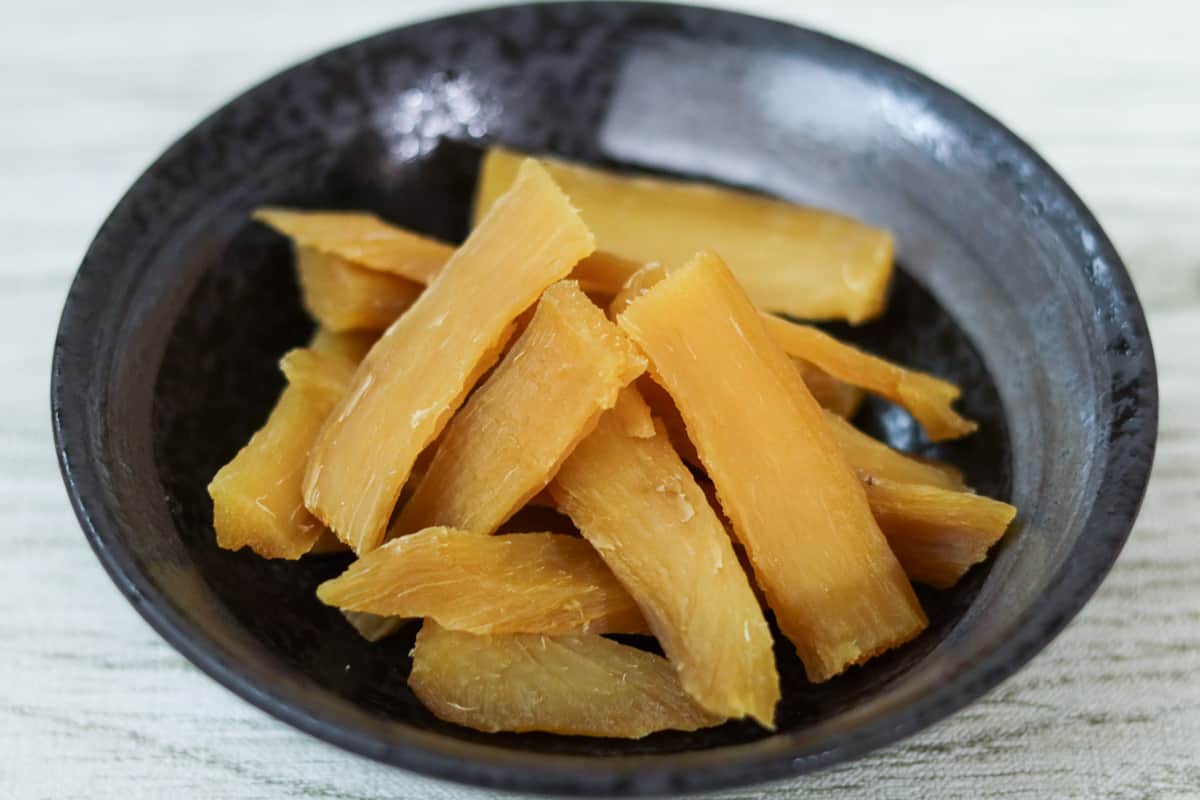
How to choose the best sweet potatoes for hoshi imo
When purchasing Japanese sweet potatoes, choose the best ones available. You can assess their quality based on the following visual cues:
- Look for dark, soil-like streaks or spots on the surface.
These markings are caused by a white substance called “yarapin,” which seeps out of the sweet potato and then oxidizes.
Yarapin tends to appear on sweet potatoes with a high sugar content, indicating a greater potential for sweetness. The markings should have a glossy appearance, feel firm, and be slightly sticky to the touch. Be careful not to confuse these marks with mold or black spot disease.
- Avoid ones that are overly large.
Sweet potatoes that are too large are usually less sweet and harder to cook through. A weight of 9-12 ounces (250-350 g) is ideal for hoshi imo. To ensure even cooking, it is best to choose sweet potatoes with a uniform thickness.
Even if two sweet potatoes look the same size, their weights might differ. In that case, choose the heavier one, as lighter sweet potatoes are likely to have less dense flesh.
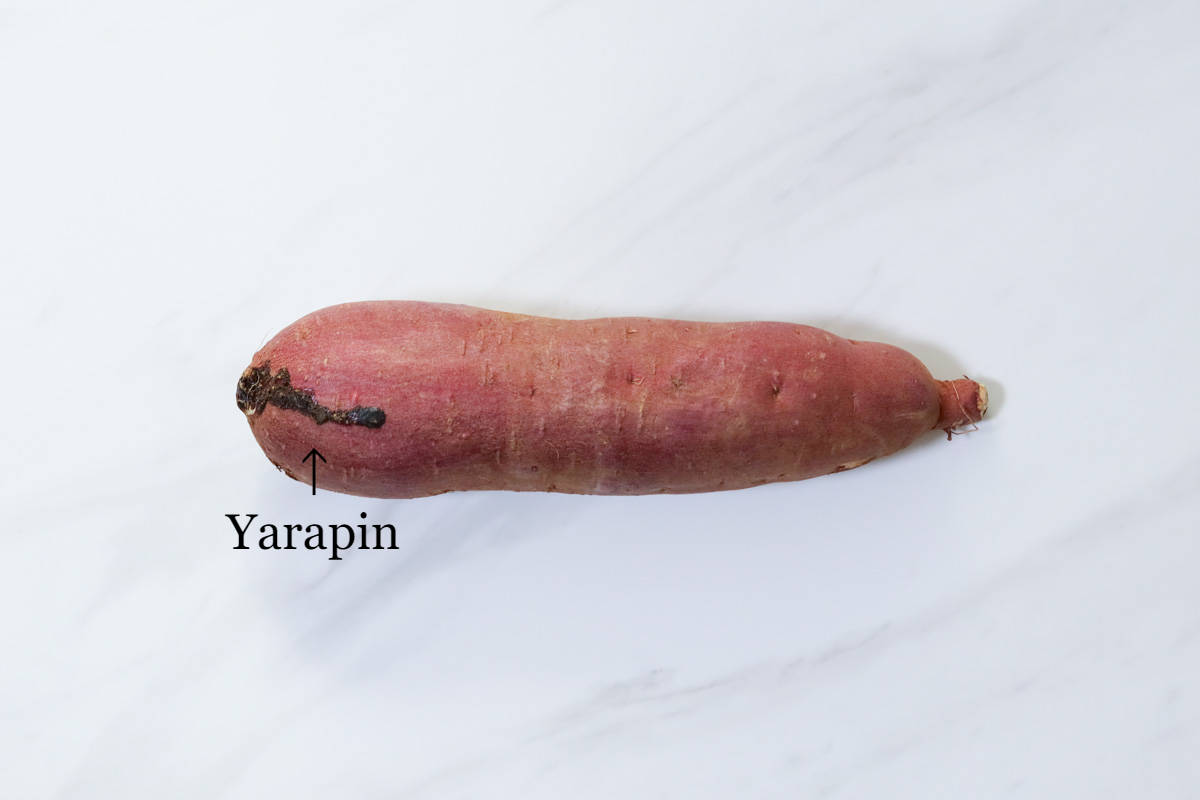
In Japan, sweet potatoes are typically harvested from September to November. However, they become sweeter and more flavorful after aging for about 2-3 months post-harvest. Therefore, those available from December to February are generally the best for eating.
Additionally, while you can make hoshi imo with any type of Japanese sweet potato, if you have the option, I highly recommend trying Beni-Haruka (紅はるか) or Anno-Imo (安納芋). These varieties have remarkably high sugar content, resulting in pronounced sweetness and a slightly translucent appearance in the finished hoshi imo, due to their high water content.
Cutting thickness for even drying
This Japanese snack can be enjoyed in many different shapes. You can keep the natural form of the sweet potato by cutting it into large vertical slices, or cut it into easy-to-eat sticks. In this recipe, I cut it into bite-sized pieces, but feel free to shape it however you like.
What really matters isn’t the shape—it’s the thickness. When cutting the sweet potatoes, try to keep each piece about ⅓ inch (7-10 mm) thick. This helps the pieces dry more quickly and ensures a consistent texture.
If the pieces are too thick, the inside may stay moist while the outside becomes too hard. Additionally, if the thickness is uneven, the texture can vary from piece to piece.
How drying time affects texture
By sun-drying the sweet potato pieces, you can make hoshi imo.
The texture of hoshi imo can vary depending on how long the pieces are left to dry in the sun. While the most common drying time is 3-5 days, I recommend 2 days, which results in a slightly softer texture. The longer the drying period, the firmer the texture becomes, making it more suitable for longer shelf life.
However, keep in mind that the drying time is influenced by temperature and humidity, so treat it only as a rough guideline.
It is best to make it during cold, low-humidity seasons. If made under different conditions or without direct sunlight, you might need to extend the drying period. To achieve your preferred texture, try periodically checking your hoshi imo by tasting it during the drying process.
At night, store it in a cool, well-ventilated place. Avoid leaving it in a heated room, as this can lead to mold growth.
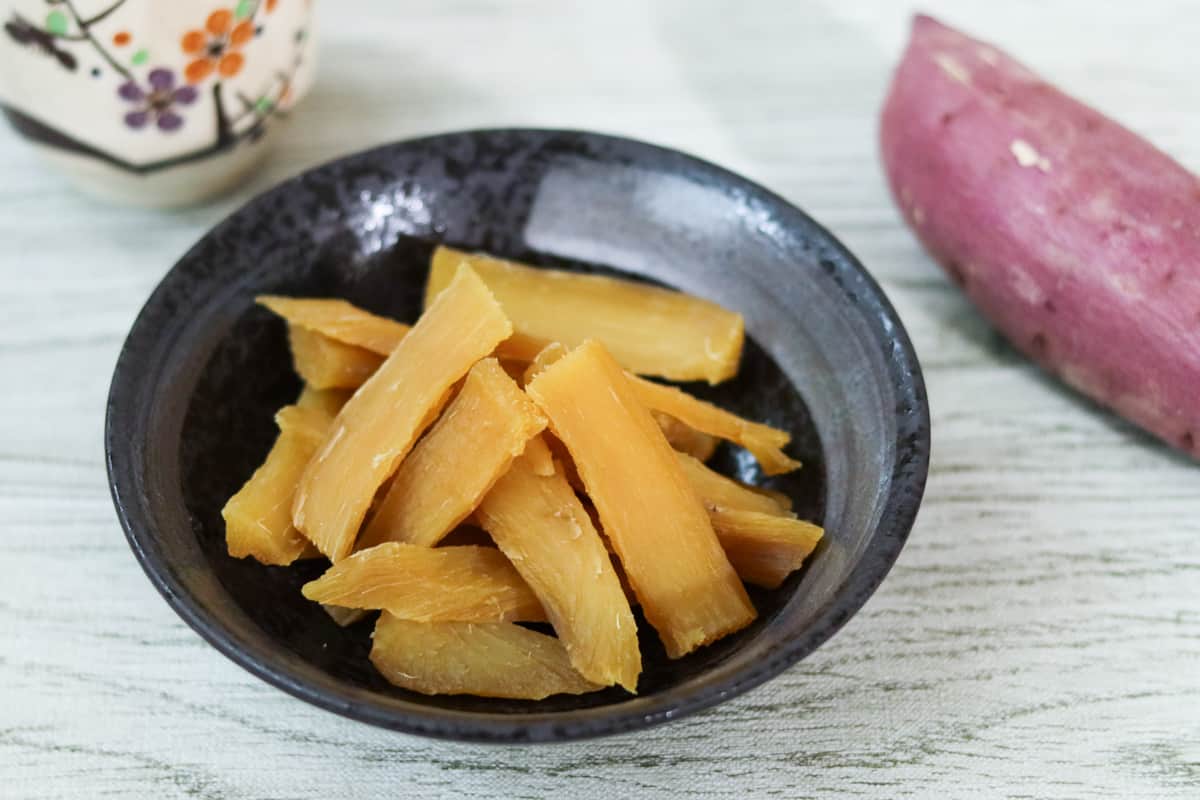
📋Step-by-step recipe
Ingredients
- 1 Japanese sweet potato (satsumaimo) (optimal weight: 9-12 ounces / 250-350 g)
Instructions
🕒 Total: 2 days 1 hr 10 mins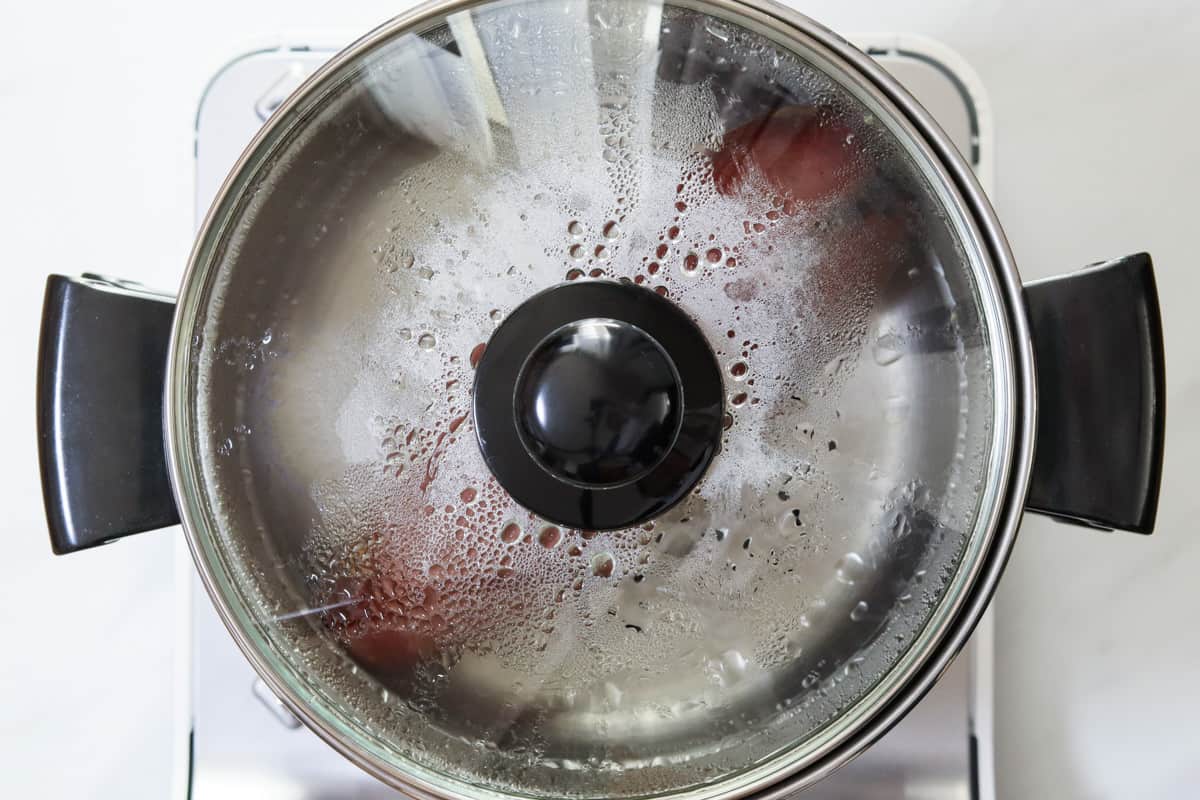
Step 1
Wash the sweet potato thoroughly to remove any dirt. Fill a steamer with water and heat it until it boils. Once boiling, add the sweet potato and steam it for about an hour. Alternatively, you can boil it for about an hour.
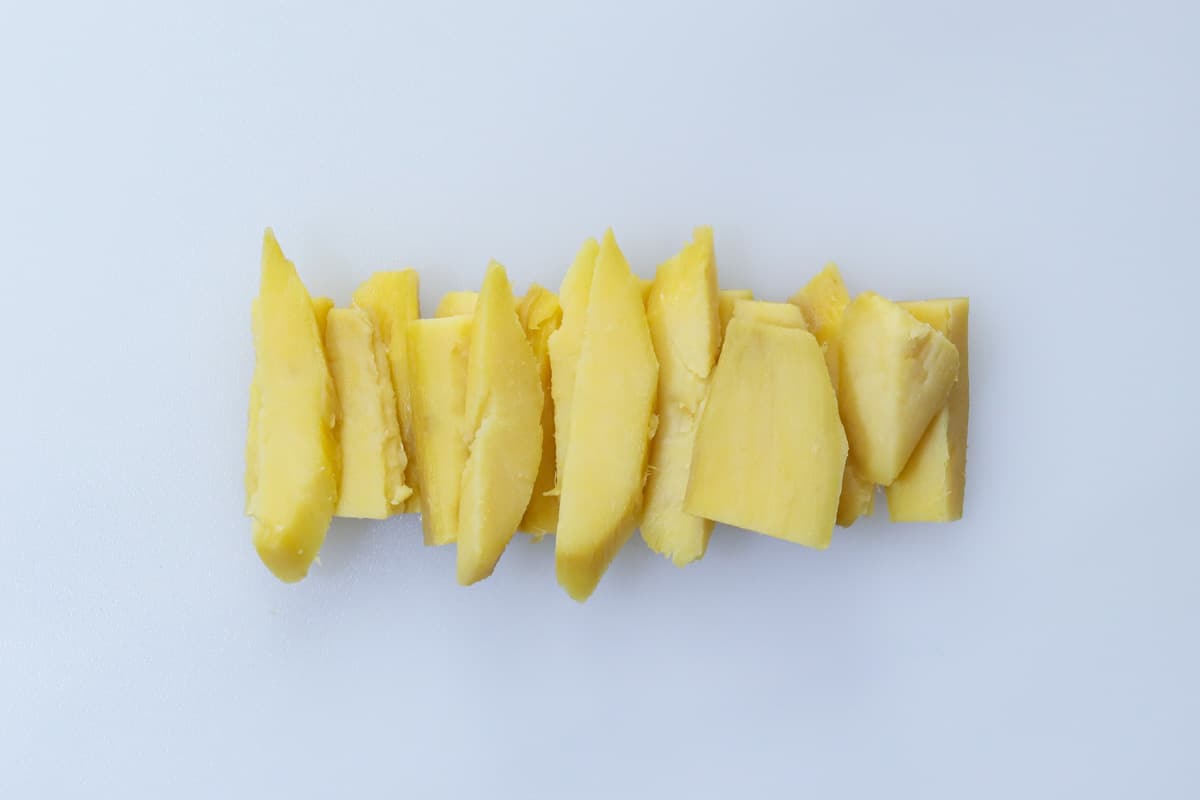
Step 2
Remove the sweet potato from the steamer. Trim both ends and peel off the skin along with any brown parts inside. Cut it into your preferred size, about ⅓ inch (7-10 mm) thick.
* I cut the sweet potato into bite-sized pieces, but you can also keep its natural shape by cutting it into large vertical slices, or cut it into easy-to-eat sticks—as long as each piece is about ⅓ inch (7-10 mm) thick.
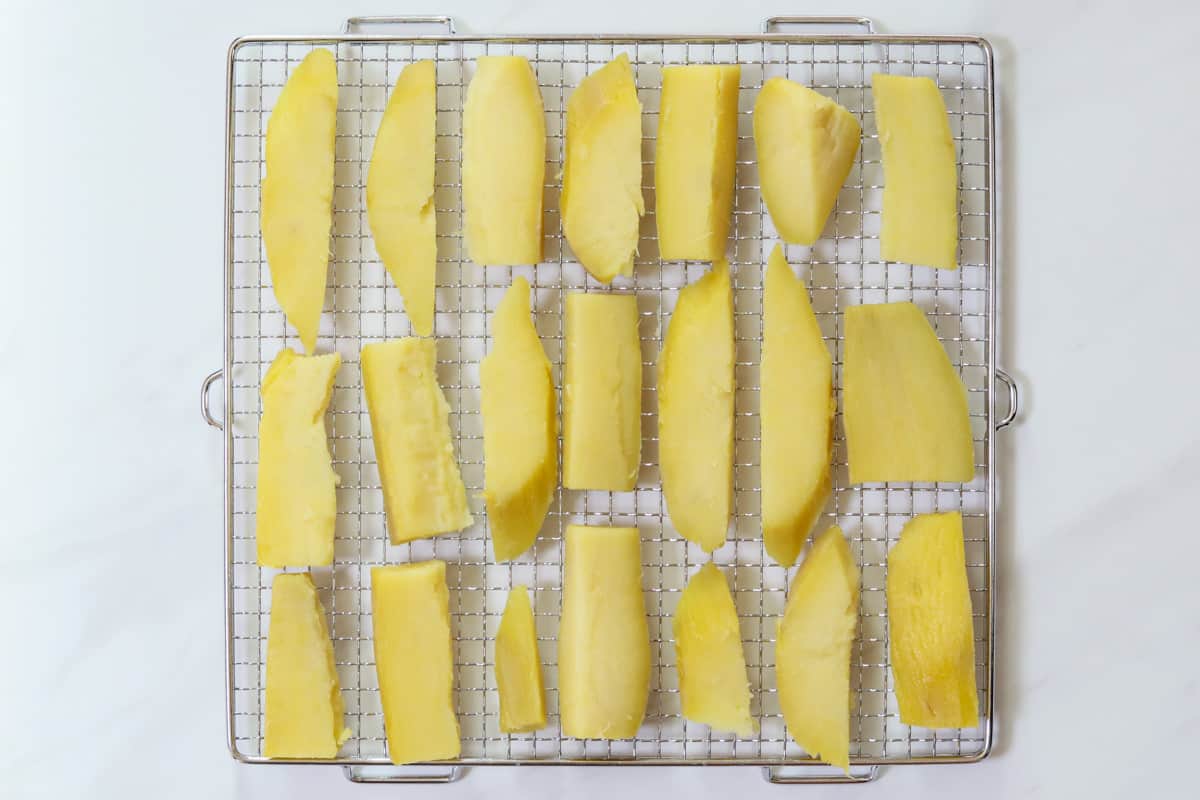
Step 3
Spread the sweet potato pieces on a wire rack or bamboo colander, making sure they don't overlap. Let them dry in the sun for 2 or more consecutive sunny days. Once they reach your desired level of firmness, they are ready to enjoy.
Note: Store the pieces at night in a cool, well-ventilated place to prevent mold growth. Drying for 2 days results in a slightly softer texture (recommended), while drying for 3-5 days yields a firmer texture. If you want to keep insects away from the pieces, cover them with a net or similar material.
To store
If you dry your sweet potato pieces in the sun for 2 days, you can store your hoshi imo in an airtight container in the refrigerator for up to 4 days. Drying them in the sun for 5 days will allow the hoshi imo to last for up to a week.
What is the white powder on hoshi imo?
When drying Japanese sweet potato pieces in the sun, you may notice white powder on their surface. This is crystallized sugar from the sweet potatoes and is completely safe to eat.
However, if it rains during the sun-drying process, or if you leave them in a heated room overnight, white mold may develop. While white powder only on the surface indicates crystallized sugar, if it penetrates into the interior of the sweet potato, it is likely mold. Similarly, the appearance of black spots can also be a sign of mold. In either case, you should avoid eating those pieces.
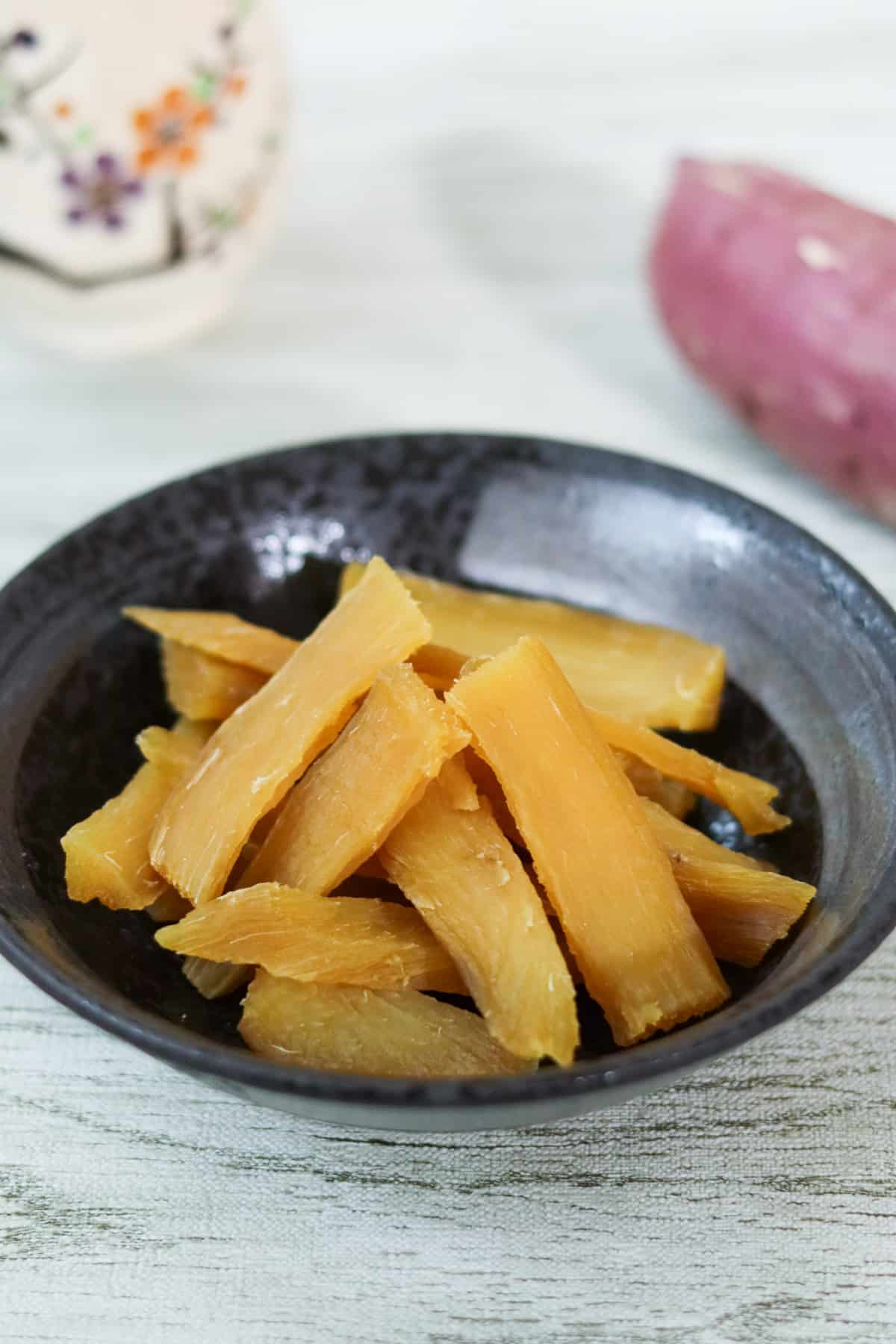
If you try this recipe, I’d love to hear what you think. Please consider leaving a review and star rating in the comments below. If you enjoyed it, I’d really appreciate it if you shared it with your friends.
More Japanese sweet potato recipes you'll love
Recipe card

Hoshi Imo (Japanese Dried Sweet Potatoes)
Ingredients
- 1 Japanese sweet potato (satsumaimo) (optimal weight: 9-12 ounces / 250-350 g)
Instructions
- Wash the sweet potato thoroughly to remove any dirt. Fill a steamer with water and heat it until it boils. Once boiling, add the sweet potato and steam it for about an hour. Alternatively, you can boil it for about an hour.
- Remove the sweet potato from the steamer. Trim both ends and peel off the skin along with any brown parts inside. Cut it into your preferred size, about ⅓ inch (7-10 mm) thick.* I cut the sweet potato into bite-sized pieces, but you can also keep its natural shape by cutting it into large vertical slices, or cut it into easy-to-eat sticks—as long as each piece is about ⅓ inch (7-10 mm) thick.
- Spread the sweet potato pieces on a wire rack or bamboo colander, making sure they don't overlap. Let them dry in the sun for 2 or more consecutive sunny days. Once they reach your desired level of firmness, they are ready to enjoy.Note: Store the pieces at night in a cool, well-ventilated place to prevent mold growth. Drying for 2 days results in a slightly softer texture (recommended), while drying for 3-5 days yields a firmer texture. If you want to keep insects away from the pieces, cover them with a net or similar material.
Notes
- If you dry your sweet potato pieces in the sun for 2 days, you can store your hoshi imo in an airtight container in the refrigerator for up to 4 days. Drying them in the sun for 5 days will allow the hoshi imo to last for up to a week.


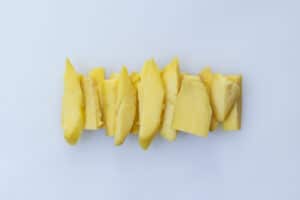
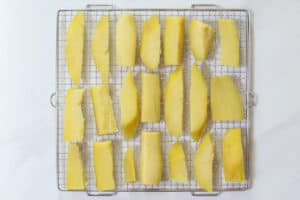

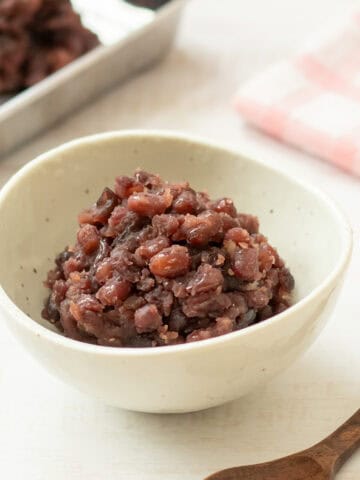

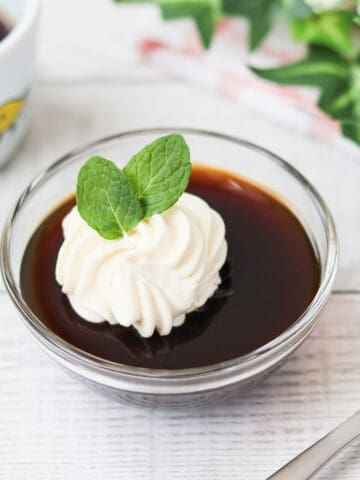
Leave a Rating and a Comment